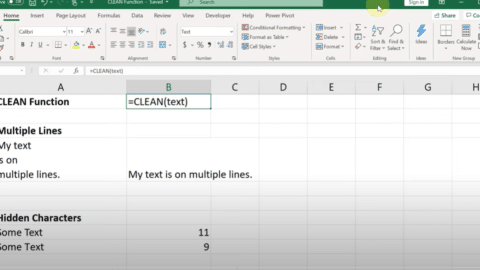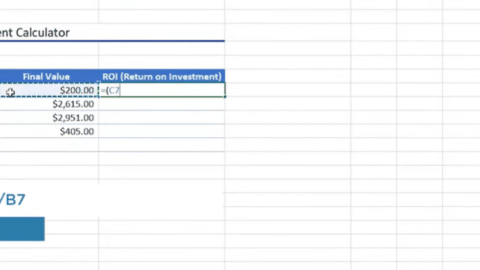How to Use the DATEVALUE Excel Function for Better Data Management
Do you work with large amounts of data in Excel? If so, you’re probably always looking for ways to improve your workflow and make your data more manageable. One Excel function that can help with this is the DATEVALUE function. In this article, we’ll explore what the DATEVALUE function does, how to use it, and why it’s useful.
Table of Contents
Introduction
Excel is a powerful tool for managing data, but it can be overwhelming to work with large amounts of data. One way to make your data more manageable is to use functions that can perform calculations and transformations on your data. The DATEVALUE function is one such function that can help you work more efficiently with dates in Excel.
Using the DATEVALUE function can save you time and effort when working with date data. It converts a date in text format to a date value that Excel can recognize, making it easier to perform calculations and other operations on that data. Let’s take a closer look at how the DATEVALUE function works.
How to Use the DATEVALUE Excel Function
Using the DATEVALUE function is easy. Here’s the syntax of the function:
=DATEVALUE(date_text)
The date_text the argument is the text representation of the date that you want to convert. For example, if you have a cell that contains the text “5/1/2023”, you can use the DATEVALUE function to convert it to a date value like this:
=DATEVALUE("5/1/2023")
When you enter this formula into a cell, Excel will display the date value that corresponds to the text “5/1/2023”. In this case, the date value is 44412.
The DATEVALUE function can also be used with cell references. For example, if you have a cell that contains the text “5/1/2023”, you can use the DATEVALUE function like this:
=DATEVALUE(A1)
This formula will convert the date text in cell A1 to a date value.
Examples of Using DATEVALUE Excel Function
Here are some examples of using the DATEVALUE function:
- Suppose you have a list of dates in text format like this:
5/1/2023
6/1/2023
7/1/2023
You can use the DATEVALUE function to convert these dates to date values like this:
=DATEVALUE(A1)
=DATEVALUE(A2)
=DATEVALUE(A3)
- Suppose you have a cell that contains a date in text format, like this:
May 1, 2023
You can use the DATEVALUE function to convert this date to a date value like this:
=DATEVALUE("May 1, 2023")
The date value will be
44412. - Suppose you have a cell that contains a date in text format, but the text is not in a format that Excel recognizes. For example:
2023-05-01
You can use the TEXT function to reformat the text, and then use the DATEVALUE function to convert the reformatted text to a date value. Here’s how:
=DATEVALUE(TEXT(A1, "mm/dd/yyyy"))
This formula will convert the text “2023-05-01” to the date value
44412.
FAQs
Q1. Can I use the DATEVALUE function with dates in different formats?
Yes, you can use the DATEVALUE function with dates in different formats. However, you may need to use the TEXT function to reformat the date text before using the DATEVALUE function. This will ensure that Excel can recognize and convert the date text to a date value.
Q2. What happens if I use the DATEVALUE function with text that is not a valid date?
If you use the DATEVALUE function with text that is not a valid date, Excel will return a #VALUE! error. To avoid this error, make sure that the text you’re using with the DATEVALUE function is a valid date.
Q3. Can I use the DATEVALUE function with date and time values?
No, the DATEVALUE function only works with dates. You can use the INT function instead if you want to convert a date and time value to a date value. The INT function truncates a date and time value to just the date portion.
Q4. Can I use the DATEVALUE function to convert dates in non-English languages?
Yes, you can use the DATEVALUE function to convert dates in non-English languages. However, you may need to use the TEXT function to reformat the date text so Excel can recognize it.
Q5. What is the maximum and minimum date value that Excel can recognize?
Excel can recognize dates from January 1, 1900, to December 31, 9999. Excel will not recognize any date outside of this range.
Q6. Can I use the DATEVALUE function with dates in different time zones?
You can use the DATEVALUE function with dates in different time zones. However, you will need to consider the time zone offset when converting the date text to a date value.
Conclusion
The DATEVALUE function is a powerful tool for working with date data in Excel. Converting date text to date values makes it easier to perform calculations and other operations on date data. Whether you’re working with a small amount of data or a large dataset, the DATEVALUE function can help you save time and work more efficiently.
If you’re not already using the DATEVALUE function in your Excel workflow, try it! You may be surprised at how much it can simplify your data management tasks.
Hello, I’m Cansu, a professional dedicated to creating Excel tutorials, specifically catering to the needs of B2B professionals. With a passion for data analysis and a deep understanding of Microsoft Excel, I have built a reputation for providing comprehensive and user-friendly tutorials that empower businesses to harness the full potential of this powerful software.
I have always been fascinated by the intricate world of numbers and the ability of Excel to transform raw data into meaningful insights. Throughout my career, I have honed my data manipulation, visualization, and automation skills, enabling me to streamline complex processes and drive efficiency in various industries.
As a B2B specialist, I recognize the unique challenges that professionals face when managing and analyzing large volumes of data. With this understanding, I create tutorials tailored to businesses’ specific needs, offering practical solutions to enhance productivity, improve decision-making, and optimize workflows.
My tutorials cover various topics, including advanced formulas and functions, data modeling, pivot tables, macros, and data visualization techniques. I strive to explain complex concepts in a clear and accessible manner, ensuring that even those with limited Excel experience can grasp the concepts and apply them effectively in their work.
In addition to my tutorial work, I actively engage with the Excel community through workshops, webinars, and online forums. I believe in the power of knowledge sharing and collaborative learning, and I am committed to helping professionals unlock their full potential by mastering Excel.
With a strong track record of success and a growing community of satisfied learners, I continue to expand my repertoire of Excel tutorials, keeping up with the latest advancements and features in the software. I aim to empower businesses with the skills and tools they need to thrive in today’s data-driven world.
Suppose you are a B2B professional looking to enhance your Excel skills or a business seeking to improve data management practices. In that case, I invite you to join me on this journey of exploration and mastery. Let’s unlock the true potential of Excel together!
https://www.linkedin.com/in/cansuaydinim/










